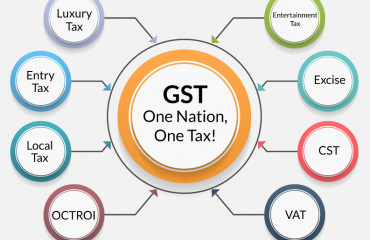
Food and fertilizer subsidy is an important element in budgetary allocations, where international prices of hydrocarbons will play a crucial role in the fiscal math.
- Food and fertilizer subsidy is an important element in budgetary allocations, where international prices of hydrocarbons will play a crucial role in the fiscal math.
Industries are pinning hopes on the Union Budget that the Finance Minister Nirmala Sitharaman will be presenting on 1st February. Expectations are high on this last budget before the general elections in 2024. Capex, infrastructure spending and jobs growth would be important elements of the budget. A raft of measures are expected to be announced for agriculture, which is slated 1 to see a 3.5% growth this fiscal.
There will be a focus on farmer's income and schemes for employment could see increased outlays.
Attention will also be given to agrochemicals, with ₹3.8 lakh crore earmarked 2 for the food and fertilizer subsidies. Food and fertilizer subsidy is an important element in budgetary allocations, where international prices of hydrocarbons will play a crucial role in the fiscal math.
The budget provisions 3 for agriculture and farmer welfare were at ₹1,38,550 crore in FY23 versus ₹24,460.51 crore in FY16. This budget will have to calibrate expectations on how to augment farm incomes, bolster rural demand and ensure better prices for farmers.
The central point then will be on bettering the agricultural output and ensuring that there are enough reserves for our burgeoning population. Steps for agricultural research and agri-tech will come to play a catalytic role in changing the agri-landscape. Schemes such as the PLI Scheme for food processing, Krishi Udan 2.0 Scheme and eNam have already been announced. The budget can take these a step further to bolster these existing schemes.
Focus on agri-tech
Agri-tech startups have garnered 4 roughly ₹6600 crore via private equity funding, which goes to show the importance of technology in furthering the cause of agriculture. From precision farming, to drones for application of agrochemicals, tech holds the key to innumerable opportunities for enhancing crop yields, furthering exports and driving overall productivity. There can be greater impetus on AI, IoT, which can complement the Digital Agriculture Mission. Tax incentives for the agriculture value chain would go a long way in helping the cause of the sector.
Infrastructure and R&D
Another focus area is that of innovation and research. Innovation is going to be an important facet of agriculture, right from facilitating research on GM crops to enabling climate resistant crops, to protecting 5 soil. At present, the spending 6 on agriculture R&D is 0.4% of the GDP. There is scope to invest more funds in R&D to accelerate the process for introduction of new technologies and product development. This will not only help agri- industries but also the allied sectors, which will stand to benefit from R&D and help increase productivity levels. This will be crucial if we have to look at bettering our agri-exports, which grew 7 by 19.92% in FY22 to touch USD 50.21 billion, in spite of logistical challenges.
There should be focus on ease of doing business for facilitating better movement of goods. Infrastructure needs to be strengthened on cold storage facilities, supply chains and warehousing facilities.
From a policy perspective, rationalizing 8 GST on agrochemicals will put these on an equal footing with other agri-inputs, which will ease cost pressure on farmers.
A Production Linked Incentive Scheme for 9 agrochemicals will be a welcome step in helping domestic producers further the cause of an Atmanirbhar Bharat. It will not only give a fillip to local production but also mitigate the need for imports.
The budget can prove to be a game changer for India's agrarian economy, if it invests in all these facets that can potentially transform agriculture
